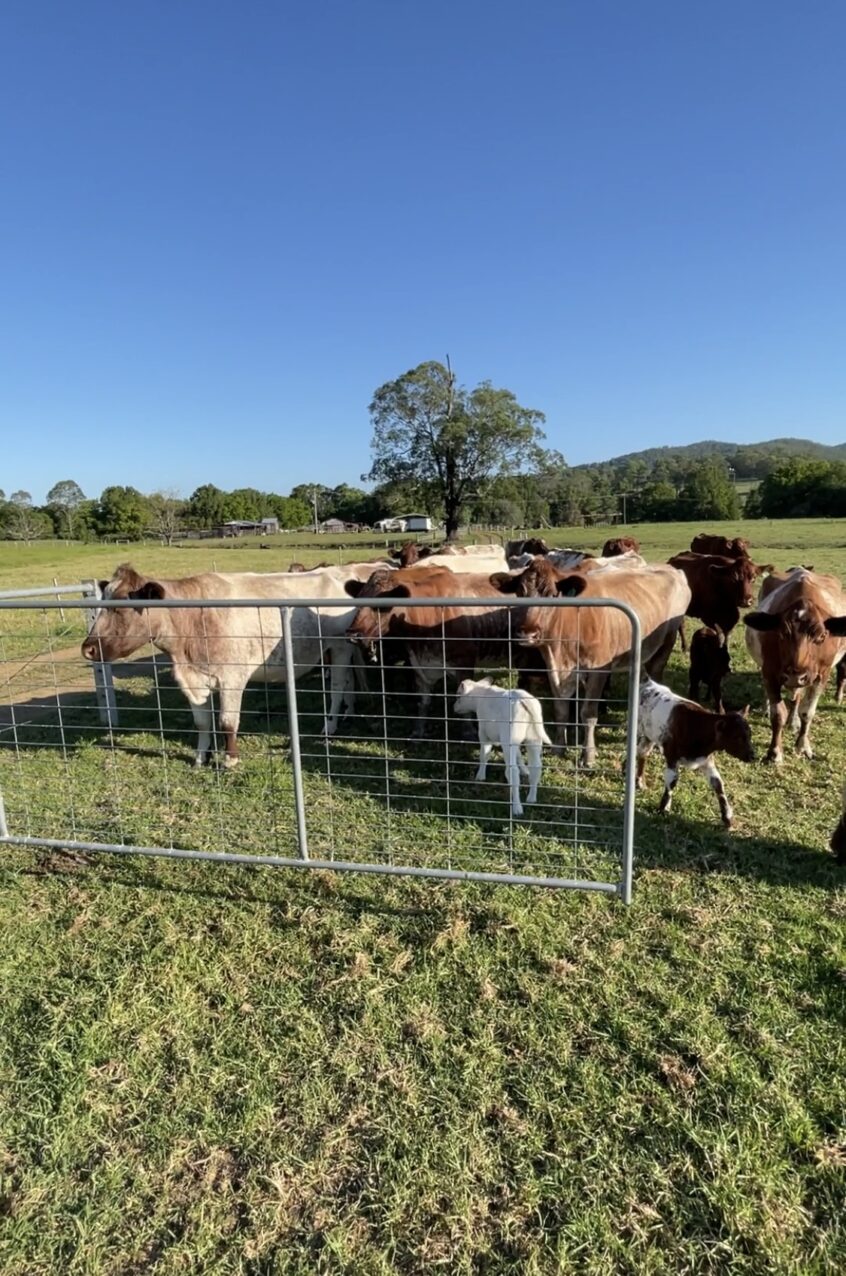Farm Gates and Livestock – Safety and Compromise

Title: Ensuring Livestock Safety: The Vital Role of Gate Design
In the realm of livestock management, safety isn’t just a priority—it’s a necessity. As any seasoned farmer knows, the layout of your infrastructure can make all the difference in maintaining a secure and efficient environment for both animals and handlers. One often-overlooked aspect of this infrastructure is gate design, which plays a crucial role in controlling animal movement and preventing injuries. In this article, we’ll delve into the significance of gate safety with livestock, highlighting the importance of gate orientation, and exploring the advantages and drawbacks of side-mounted versus end-mounted gates.
Importance of Gate Swinging Direction
Picture this: a herd of cattle eagerly moving through a narrow passage, guided by the careful direction of the handlers. Suddenly, a gate swings inward, obstructing their path and causing panic among the animals. This scenario underscores the critical importance of gate orientation. Gates that swing inward not only impede the smooth flow of livestock but also pose a significant risk of injury as animals may become trapped or squeezed against the gate.
On the other hand, gates that swing outward facilitate seamless movement, allowing livestock to pass through without obstruction. This outward swinging motion creates a clear pathway, reducing the likelihood of accidents and injuries. Moreover, it enables handlers to maintain better control over the animals’ movement, enhancing overall efficiency in handling and management tasks.
Side-Mounted Gates: Pros and Cons
Side-mounted gates are a common choice in livestock facilities, offering simplicity and ease of installation. These gates are attached to the fence post on one side, allowing them to swing open and closed with relative ease. One of the primary advantages of side-mounted gates is their ability to open against the fnce, allowing free travel of livestock.
However, side-mounted gates also have their drawbacks. Since they swing perpendicular to the fence line, they can obstruct the livestock when opening against the flow. This limitation may impede the movement of larger animals or equipment, potentially leading to congestion and inefficiency. Additionally, side-mounted gates may experience increased wear and tear, particularly as they cause uneven strain on the post away from the strain line. Over time this can cause fences to lean.
End-Mounted Gates: Advantages and Challenges
In contrast, end-mounted gates are affixed to the end of a fence post, allowing them to swing parallel to the fence line. This orientation minimises obstruction to traffic in either direction when the gate is fully open. However the gate will open only 90 degrees to the line of fence, causing livestock and handlers alike to jam in the gate path if moving along the fenceline. End-mounted gates are often favoured for machinery operation as you can park in front of the gate and open it away from the direction of travel.
One of the key drawbacks of end-mounted gates is their tendency to hinder livestock movement, thanks to their inability to fold against the fence. By swinging perpendicular to the fence line, these gates create a wide, clear pathway for machinery traffic, allowing easier operation. Positively, end-mounted gates may experience less stress on the hinges, as the swinging motion aligns with the natural movement of the gate.
The solution to this has been to engineer on farm a second hinge seperated from the gate post by a short panel. This allows the gate to swing on two hinges allowing a 360 degree pathway of movement when attached to the end of the fenceline. Until recently, this was only ever done by the most patient and perseverent farmer in his or her own time. Recently, the first commercially avalable double hinged gate on the market, the “Clever Gate” has allowed for this convenience to be purchased off the shelf. With a unique design that aligns the secondary hinge to allow smooth closing and latching the gate is easy to operate. The inbuilt secondary hinge means that the gate fits existing gateways without modification and using existing hinges.
Conclusion
In the realm of livestock management, gate safety is paramount. Choosing the right gate design and orientation can significantly impact the efficiency, safety, and overall success of your operation. While both side-mounted and end-mounted gates offer unique advantages and challenges, there is now a solution that does both, and it’s Australian designed and owned. Prioritising the smooth flow of livestock and minimizing the risk of injuries should remain at the forefront of decision-making with gates. By opting for gates like the clever gate that swing “both ways”, you can create a safer, more efficient environment for both animals and handlers alike.
One Comment on “Farm Gates and Livestock – Safety and Compromise”
hi Tim could you please contact me ive been trying but my computer wont let me im sorry, best regards Clay Evans 0428691520